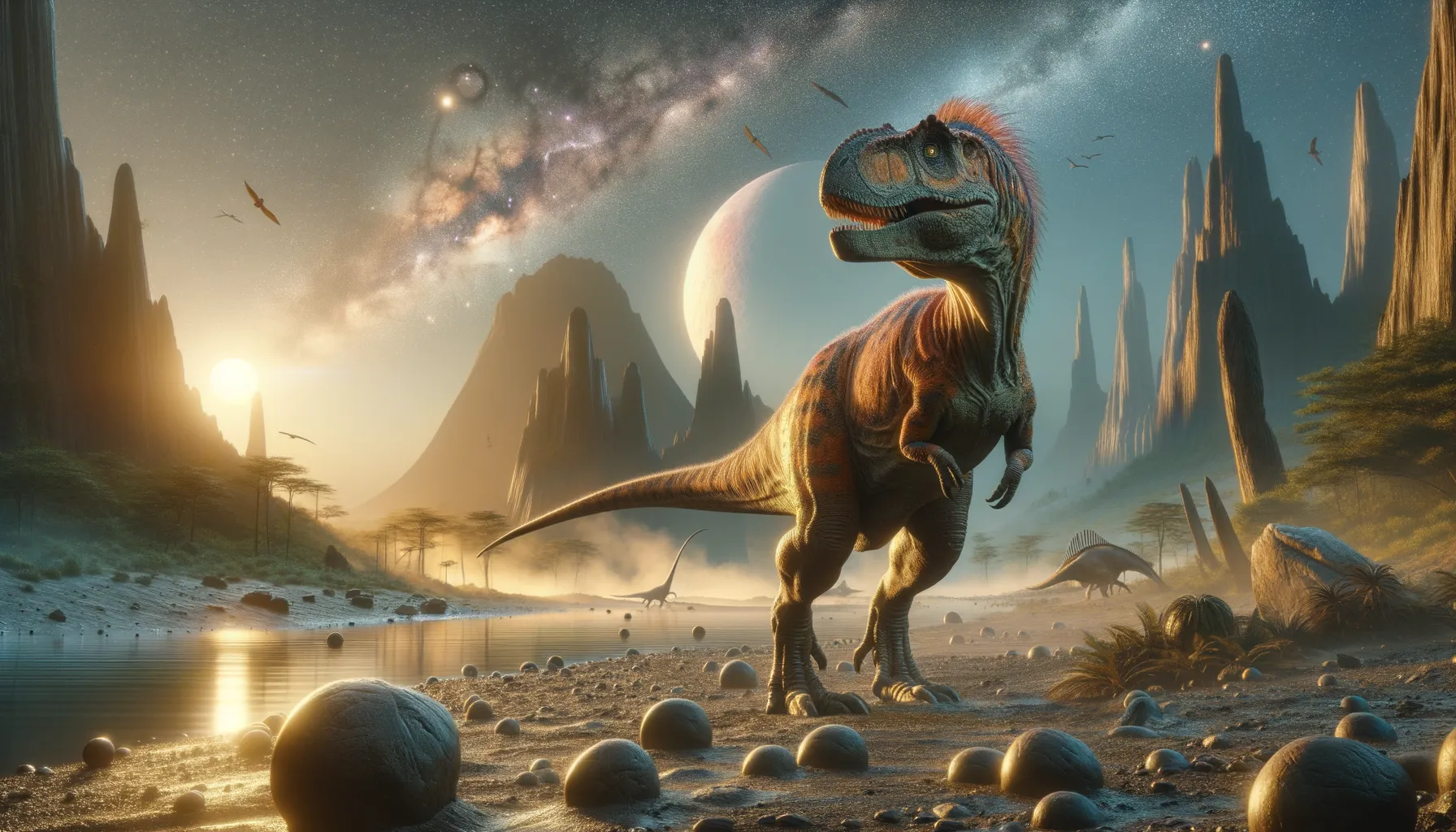
Peishansaurus
A mystery among the Cretaceous herbivores.
Period
Cretaceous
Length
Estimated to be about 1 to 2 meters long.
Height
Likely under a meter at the shoulder.
Weight
Estimated to be quite light, around a few dozen kilograms.
Peishansaurus is a little-known dinosaur with scant fossil evidence available for study. Believed to be a small ornithischian, it likely lived during the Late Cretaceous period. Although very little is understood about its behavior or anatomy, it remains an intriguing puzzle for paleontologists eager to uncover more about the diversity of life during this era.
Diet
Peishansaurus was likely an herbivore, feeding on low-lying plants. Its diet would have consisted of ferns and possibly other soft vegetation available in its environment.
Hunting
As a plant-eating dinosaur, Peishansaurus did not engage in hunting behavior. Instead, it would have foraged for its food, likely using its beak to grasp and bite vegetation.
Environmental challenges
Peishansaurus faced challenges such as finding sufficient food resources in its habitat, which was possibly limited during dry seasons. Predation was another significant challenge, as it shared its environment with various carnivorous dinosaurs. Periodic natural events and climate changes would have also imposed stress on its survival, testing its adaptability.
Speed
Likely slow, as it was a small herbivore.
Lifespan
Unknown, but possibly similar to other small dinosaurs.
First discovery
Discovered in China in the 1920s.
Fun Facts
- Peishansaurus is known from very limited fossil evidence, making it quite mysterious and intriguing to scientists.
- It was discovered in China, and its name means 'Pei Mountains lizard', referring to the region where it was found.
- Peishansaurus lived during the Cretaceous period, which was the last era of the dinosaurs.
- Because of the scarcity of fossils, scientists have to make educated guesses about its appearance and behavior.
- Many aspects of Peishansaurus are still unknown, such as its exact size and diet.
- The few fossils discovered suggest that Peishansaurus might have been a small, plant-eating dinosaur.
- Despite the mystery, Peishansaurus continues to capture the imagination of paleontologists who hope to learn more about it in the future.
Growth and Development
Peishansaurus, like many dinosaurs, likely experienced rapid growth during its juvenile stage. As a small dinosaur, it would have matured relatively quickly to reduce the period of vulnerability to predators. The fossil record is sparse, making precise statements about its development difficult, but it likely followed a pattern similar to related species.
Habitat
Peishansaurus lived in what is now China, an area that was likely a range of habitats including forested areas and open plains. The region's climate and vegetation supported diverse plant life, offering Peishansaurus ample food sources. This dinosaur's habitat would have changed with the seasons, demanding adaptability.
Interaction with other species
Peishansaurus shared its ecosystem with both herbivorous and carnivorous dinosaurs of varying sizes. It may have interacted indirectly through competition for resources with other herbivores. Predatory species in its habitat would have posed a constant threat, influencing its behaviors and movements.
Natural lifespan
Peishansaurus likely had a lifespan similar to other small ornithischians, living for several years if it survived past infancy.
Reproduction
As with most dinosaurs, Peishansaurus would have reproduced by laying eggs. The number of eggs per clutch, incubation period, and parental care remain speculative due to the scarcity of specific fossil evidence.
Social behaviour
Little is known about the social behavior of Peishansaurus, but it might have lived in small groups for protection against predators, similar to other small, herbivorous dinosaurs. Congregating in groups might have also aided in finding food sources more efficiently.
Fossil locations
The primary fossil evidence of Peishansaurus comes from the Gansu province in China. Few fossils have been found, leaving much about its life and characteristics a mystery to researchers. The location’s fossils have provided crucial but limited insight into its existence.
